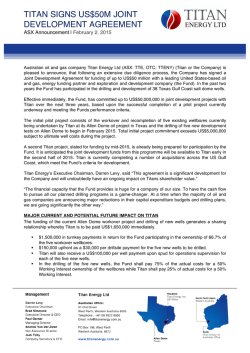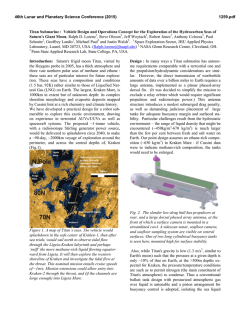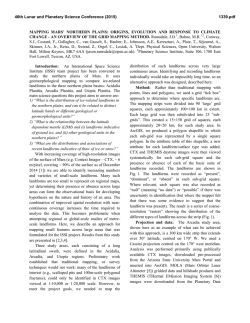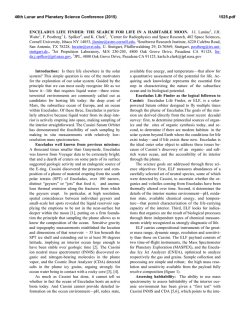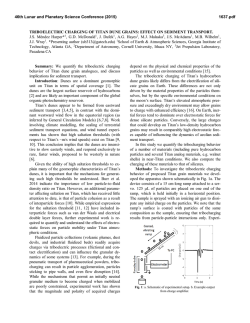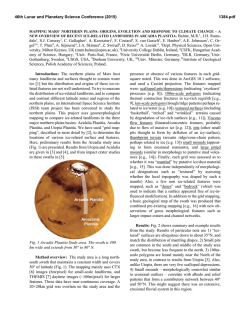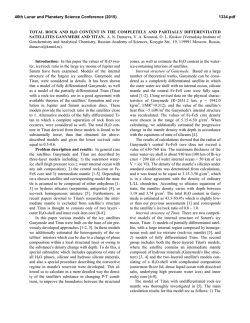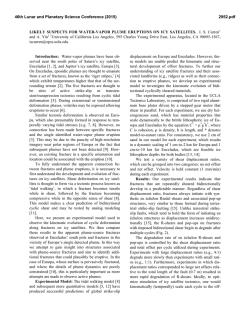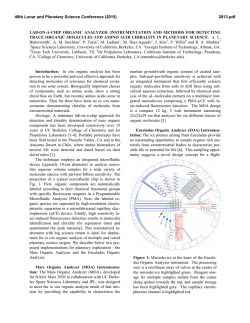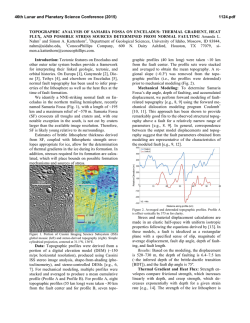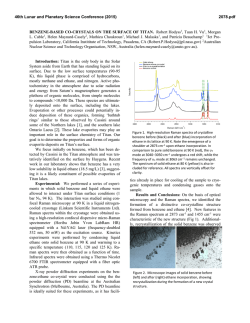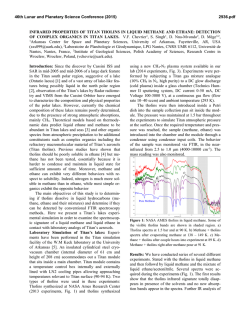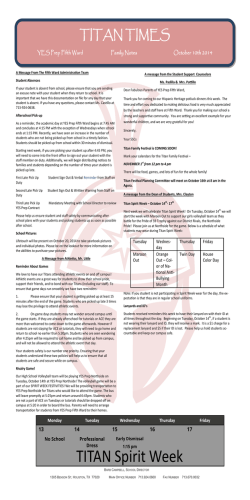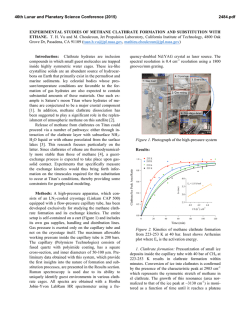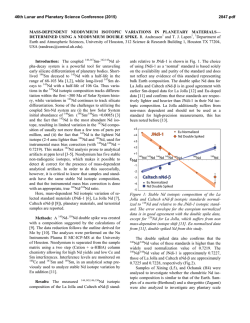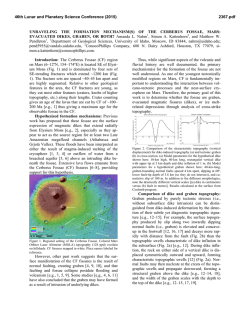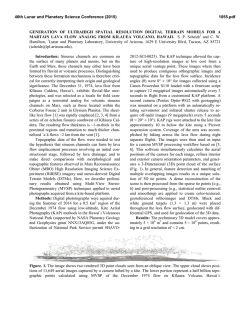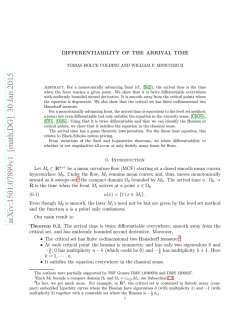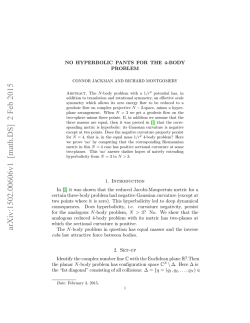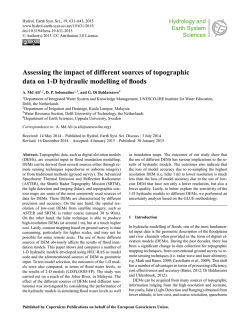
2973
46th Lunar and Planetary Science Conference (2015) 2973.pdf TOPOGRAPHIC ANALYSIS OF CRYOVOLCANIC STRUCTURES ON ENCELADUS AND TITAN COMPARED TO TERRESTRIAL LANDFORMS. F. Saavedra1 1Department of Geosciences, Universidad Nacional de Colombia, Carrera 45 No 26-85 Edificio 224, Bogotá D.C., Colombia, [email protected] Introduction: The topographic data extracted from high resolution images can generate three-dimensional models of small areas of Enceladus and Titan's surface that can be compared with Earth's digital elevation models (DEM) through GIS software. Enceladus has landforms related cryovolcanic phenomena [1] . Titan has a cryovolcanism that transforms its surface [2], generating various landforms. In terrestrial high latitudes, near the arctic and antarctic regions, landforms exist in permafrost regions where ice has significantly altered the topography. A clear example are the 'pingos' in northern regions of the Earth. Methods. The topographic data generated for small areas of Enceladus, Titan and Earth generate threedimensional models through different software and ArcScene©, Erdas© and AutoCAD Civil©. Bearing the three-dimensional models are compared the measurements of landforms and then are established similarities and differences and their relation to possible formation processes. Basic morphometric parameters. For each landform analyzed data were extracted elevation, slope, aspect, vertical curvature, horizontal curvature. The slope is important because it controls geologically surface processes, such as cryovolcanic material flow on Titan or the accumulation of particulate material ejected in zones with steep elevation changes observed on the surface of Enceladus. The orientation of landforms together give evidence of geological processes related to its creation, while the horizontal curvature and vertical curvature are related to the flow and dispersion of materials associated with cryovolcanic processes that exist in the two moons of Saturn and processes volcanic on planet Earth. Topographic position index. For each landform analyzed, was made an assessment of its topography regarding the spatial context of its location in order to relate this information to the regional geology in each planetary body. Results. The elevation of the structures analyzed are close to 1 km and hundreds of meters; also, the depressions are not below 1 km depth in selected areas. The slopes are at Enceladus, where active tectonics generates cliffs of centenaries of meters and cannot relate in any way to the terrestrial pingos. These are formed by the freezing of groundwater into a permafrost environment, but can be compared with the flow of cryovolcanic material on the surface of Titan. Terrestrial pingos would be the closest thing to a cryovolcanic phenomenon on Earth, although its elevation is between 70-600 m, is not possible to compare them with cryovolcanic landforms on Titan, for example, Sotra Patera, which has an elevation that reaches to 1500 m. The orientation and curvature of the Earth’s pingocompared with landforms on Titan have a similarity based on transport and remotion of material below the freezing point of water [3], although the temperatures in the Arctic regions of Earth and temperatures of Titan's surface are very different. The orientation and curvature of the landforms on Enceladus’ surface can only be compared with terrestrial landforms associated with tectonic processes, making impossible to establish a relationship with the pingos. Conclusions. The topographic landforms comparison between Titan, Enceladus and Earth allows for some similudes and differences. Terrestrial pingos and cryovolcanic estructures at Titan are based on material that is below the freezing point of water and abruptly changed the local topography. The cliffs and ridges of the topography of Enceladus are the result of tectonic stresses in a surface showing similar rifts to those present in the terrestrial Mid-Atlantic Ridge. References. [1] Schenk, P. M., and J. M. Moore (1995), Volcanic constructs on Ganymede and Enceladus: Topographic evidence from stereo images and photoclinometry, Journal of Geophysical Research, 100 (E9), 19009–19022. [2] Radebaugh, J. (2008), Dunes on Titan observed by Cassini Radar, Icarus, 194, 690–703. [3] Alekseyev, V.R. (2012), Cryovolcanism and the mystery of the Patom cone, Geodynamic and Tectonophysics – Institute of The Earth Crust of SB RAS, 2, 289–307.
© Copyright 2025

